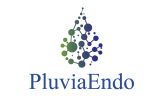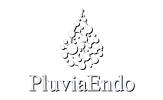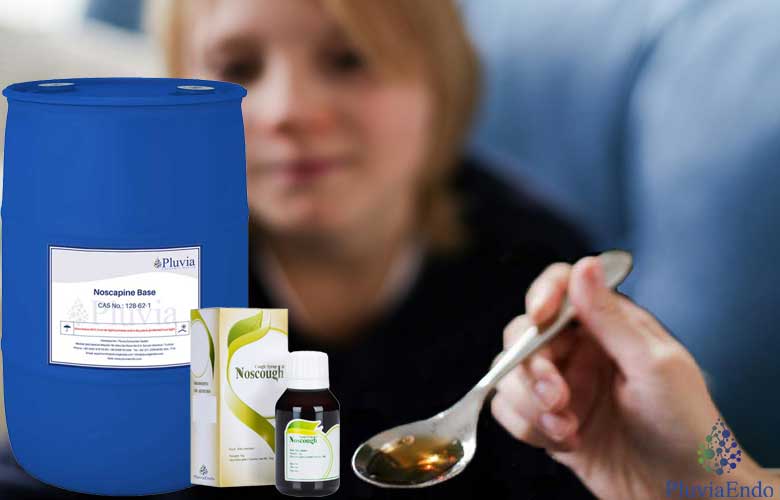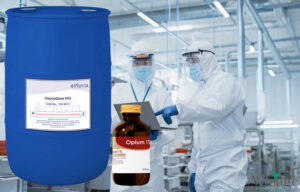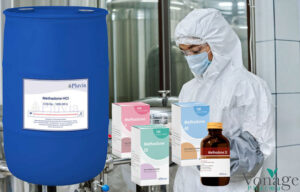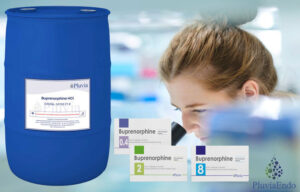In the ever-evolving landscape of pediatric pharmacotherapy, ensuring safe and effective dosing regimens remains a paramount concern. Noscapine, a naturally occurring alkaloid, has emerged as a promising therapeutic agent with many applications. Yet, the unique challenges associated with noscapine pediatric dosing necessitate a tailored approach to address this critical unmet need.
The Therapeutic Promise of Noscapine
Noscapine, derived from the opium poppy plant, has garnered significant attention for its remarkable therapeutic potential across various domains. In the field of oncology, noscapine has demonstrated promising anti-tumor activity. Also, It has a vital role in inhibiting the proliferation and migration of cancer cells while sparing healthy cells. Additionally, its neuroprotective properties have positioned it as a potential therapeutic candidate for neurodegenerative disorders. Some of these disorders include such as Alzheimer’s and Parkinson’s diseases.
Furthermore, noscapine’s bronchodilatory and anti-inflammatory effects have made it a subject of interest in the management of respiratory conditions. Examples of respiratory conditions include chronic obstructive pulmonary disease (COPD) and asthma. This versatile compound has also shown potential in other areas. For example, pain management and antimicrobial applications, further highlighting its therapeutic versatility.
Overcoming Challenges in Noscapine Pediatric Dosing
One of the primary challenges in noscapine pediatric dosing is the lack of comprehensive data and evidence-based guidelines specifically tailored to pediatric patients. Children’s physiological and developmental characteristics differ significantly from adults. It necessitates a thorough understanding of the unique pharmacokinetic and pharmacodynamic properties of noscapine in this vulnerable patient population.
Lack of Comprehensive Data and Guidelines
Factors such as age, body weight, organ maturation, metabolism, and potential drug interactions can profoundly influence the way noscapine is absorbed, distributed, metabolized, and eliminated in children’s bodies. Failure to account for these variables can lead to suboptimal dosing and compromise the safety and efficacy of the treatment. This can also potentially increase the risk of adverse effects or inadequate therapeutic responses.
Suboptimal Formulations and Delivery Systems
Moreover, the formulations and dosage forms of noscapine currently available on the market may not be optimized for the specific needs of pediatric patients. Many existing formulations are designed primarily for adult populations. It makes it challenging to achieve precise and consistent dosing in children across different age groups. This can result in potential over- or under-dosing, which can have severe consequences, including adverse effects or inadequate therapeutic outcomes.
Additionally, the delivery systems and routes of administration may not be suitable for pediatric patients, who often require specialized formulations and administration methods to enhance compliance, minimize discomfort, and ensure accurate dosing.
A Collaborative Approach to Address the Unmet Need
To address these challenges and bridge the gap in noscapine pediatric dosing, a collaborative and multidisciplinary effort is essential. For instance, involving pharmaceutical companies, academic researchers, healthcare professionals, and regulatory bodies is vital. By leveraging collective expertise and resources, stakeholders can work towards developing evidence-based dosing guidelines. They can also work towards age-appropriate formulations tailored to the unique requirements of pediatric patients.
Noscapine Pediatric Dosing: Companies Role
Pharmaceutical companies play a pivotal role in this endeavor by investing in research and development efforts focused specifically on noscapine pediatric dosing. This may involve conducting comprehensive pharmacokinetic and pharmacodynamic studies in pediatric populations across different age groups and exploring innovative dosage forms and delivery systems. Furthermore, studies in developing age-appropriate formulations that enhance palatability, ease of administration, and patient adherence.
Additionally, pharmaceutical companies can collaborate with academic researchers and healthcare professionals to design and execute well-controlled clinical trials. They also can collaborate to evaluate the safety, efficacy, and optimal dosing regimens of noscapine in various pediatric indications. These collaborative efforts can help identify potential age-related differences in drug response. Also, it can help optimize dosing strategies, and address any unique considerations for specific pediatric populations or disease states.
PluviaEndo, a global leader in pharmaceutical ingredients, offers a comprehensive range of Noscapine solutions:
- Noscough Syrup: Developed in collaboration with healthcare professionals and academic researchers, our Noscough syrup is a trusted choice for various applications.
- Noscapine Base API (99% Purity): PluviaEndo’s Noscapine Base API is a proven and reliable ingredient for healthcare manufacturers seeking the highest level of purity.
Benefits:
- Expertise: Backed by collaboration with healthcare professionals and researchers.
- Quality: Committed to providing the highest purity Noscapine solutions.
- Reliability: A trusted supplier for the global pharmaceutical industry.
Contact PluviaEndo today to learn more about our Noscapine solutions and how they can benefit your business.
Academic Researchers Contributions
Academic researchers, with their expertise in drug development, pediatric pharmacology, and clinical research, can contribute significantly to advancing our understanding of noscapine’s behavior in pediatric populations. Through rigorous scientific investigations, they can elucidate the pharmacological properties of noscapine. In addition, They can identify potential age-related differences in drug response, and provide valuable insights into optimizing dosing regimens for children across various developmental stages.
Furthermore, academic researchers can explore novel drug delivery systems and formulation strategies tailored to the unique needs of pediatric patients, such as age-appropriate oral dosage forms, transdermal patches, or innovative drug-device combinations. These efforts can enhance patient compliance minimize discomfort, and ensure accurate and consistent dosing, ultimately improving therapeutic outcomes.
Healthcare Professionals Involvement
Healthcare professionals, including pediatricians, pharmacists, and nurses, play a crucial role in the practical implementation of noscapine pediatric dosing guidelines. Their expertise in patient care, medication management, and adherence monitoring can inform the development of age-appropriate formulations. In addition, it can develop dosing strategies that enhance patient experience and treatment outcomes.
Additionally, healthcare professionals can provide valuable feedback and real-world observations on the efficacy, safety, and acceptability of noscapine formulations and dosing regimens in pediatric patients. This feedback can contribute to ongoing post-marketing surveillance efforts. Also, it can help to provide valuable data on the long-term safety and effectiveness of noscapine in pediatric populations and inform future refinements and optimizations.
Noscapine Pediatric Dosing: Regulatory Bodies Guidance
Regulatory bodies, such as the Food and Drug Administration (FDA) and the European Medicines Agency (EMA), play a pivotal role in ensuring the safety and efficacy of pediatric drug products. Regulatory authorities can facilitate the approval and commercialization of age-appropriate noscapine formulations and dosing regimens. They can do this by providing guidance and establishing rigorous standards for pediatric drug development.
Collaboration between pharmaceutical companies, researchers, and regulatory bodies can streamline the establishment of noscapine pediatric dosing recommendations and ensure compliance with relevant guidelines and regulations. This collaborative approach can help address regulatory challenges. For instance, this can address ethical considerations in pediatric clinical trials. Also, this can ensure that the development and approval processes prioritize the safety and well-being of pediatric patients.
Collaborative Efforts and Educational Initiatives
Addressing the unmet needs in noscapine pediatric dosing requires a collaborative and concerted effort from various stakeholders. By fostering partnerships between industry, academia, healthcare providers, and regulatory bodies, we can unlock the full potential of noscapine and other therapeutic agents in pediatric pharmacotherapy.
Furthermore, the development of noscapine pediatric dosing guidelines and formulations should be accompanied by comprehensive educational and training initiatives. Healthcare professionals, caregivers, and patients must be equipped with the necessary knowledge and resources to ensure proper administration, monitoring, and adherence to prescribed dosing regimens.
These educational efforts can involve the creation of user-friendly materials, such as dosing charts, administration guides, and patient education resources, tailored to the specific needs of pediatric populations. Additionally, training programs and support systems can be established to empower healthcare professionals, caregivers, and patients, fostering a collaborative approach to medication management and enhancing treatment outcomes.
Noscapine Pediatric Dosing: Conclusion
The journey towards optimizing noscapine pediatric dosing is a complex and multidimensional endeavor, but one that holds immense promise for advancing pediatric care and improving the quality of life for countless children and their families. By embracing a collaborative and multidisciplinary approach, we can overcome the challenges and address the unmet needs in this critical area, paving the way for a future where every child has access to safe, effective, and tailored therapeutic interventions.
Through rigorous research, innovative formulation development, and evidence-based dosing guidelines, we can harness the full potential of noscapine and other therapeutic agents, ensuring that our youngest and most vulnerable patients receive the highest standard of care. By fostering partnerships, sharing knowledge, and prioritizing patient safety and well-being, we can collectively contribute to a brighter future for pediatric pharmacotherapy, where every child’s unique needs are met with precision, compassion, and unwavering commitment to their health and well-being.
